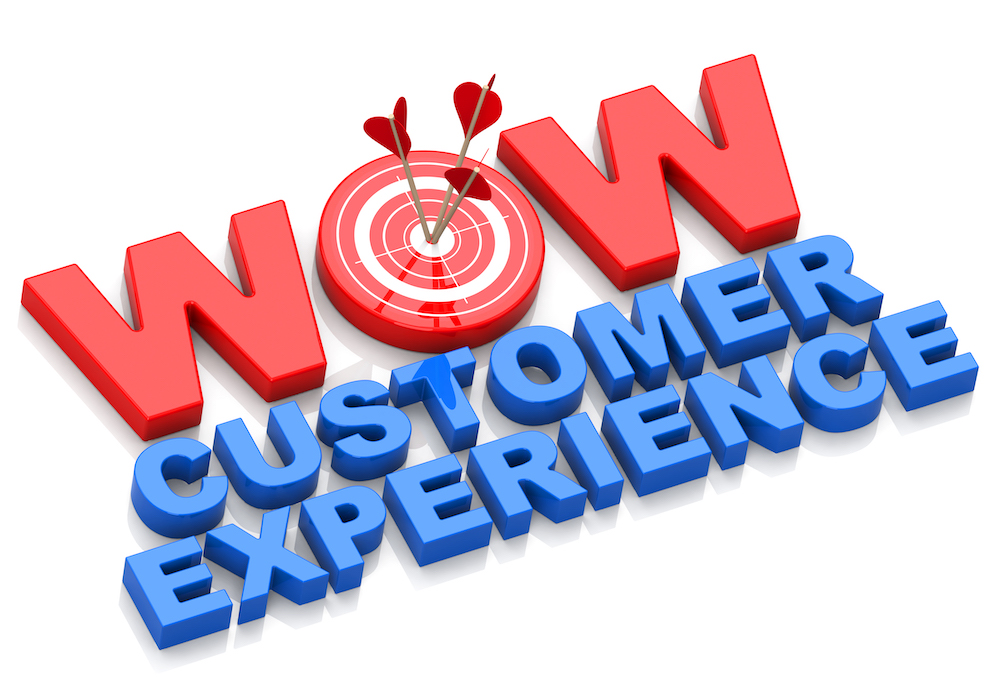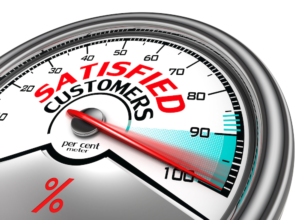
Customer Experience Basics
Business owners & managers who follow customer experience basics have a higher potential for growing their businesses than those who don’t. When you take the time to define the customer experience you want to create and then build in the processes & practices that create a great customer experience, business grows.
What Is Customer Experience Management?
Customer experience management is the process of clearly defining the experience you want your customers to have, and then developing and implementing processes & practices designed to generate the desired experience for your customers. Note: the customer EXPERIENCE is different from customer service.
The Top 3 Benefits of a Customer Experience Management Program
There are 3 key benefits of a customer experience management program:
- Increased customer loyalty & customer retention
- Increased revenues
- Achieve a competitive advantage
Why Customer Experience Management Is So Important
 96% of customers surveyed said customer services comprises part of their choice of a brand, product, or service. (Source: 2017 Microsoft study)
96% of customers surveyed said customer services comprises part of their choice of a brand, product, or service. (Source: 2017 Microsoft study)
80% of customers say the experience businesses provide is just as important as the company’s product or service. (Source: Salesforce.com)
Customers who had the best past experiences spent 140% more than those consumers who had poor customer experiences. (Source: Harvard Business Review)
Customers tell an average of 9 people about positive experiences with companies, but they tell an average of 16 people about negative customer experiences. (Source: Deloitte)
Studies Show Many Businesses Don’t Even Follow Customer Experience Basics
While a great customer experience is key to keeping customers and getting new customers, a 2017 Dimension Data study shows a serious lack of customer experience programs in businesses worldwide. This study obtained information from 1,300+ businesses in 80 countries. The results of the study revealed an unfortunate truth: Many companies either don’t have a customer experience management program, or they’re not investing in it enough. Here are some interesting stats from the study:
- Only 16% of North American companies rated their customer experience management program as 9 or more out of 10.
- Roughly 30% of the companies surveyed did not have a manager or someone appointed to develop & manage their customer’s experience.
5 Steps To Creating A Customer Experience Management Program
Here are the basic steps to follow to develop a customer experience management program:
Step 1: Know Your Customer
Customer profiling can be as simple or as complex as you want to make it. You should be able to define the following about your customer:
- Gender
- Average age
- Average education
- Why do they need or want your product or service
- What problem or pain point do you solve for your customers
- What experience do they seek when buying a product or service like what you sell?
Step 2: Define the Ideal Customer Experience – High-level View
Once you’ve completed your customer profiling, the next step is to develop a high-level view of the experience you want to create for your customers. This should be done with a group comprised of management and front-line employees using their own knowledge of the business, and reviewing customer complaints.
Step 3: Define the Specifics of the Customer Experience in Mind-set & Action Items
A high-level view of the customer experience defines the culture of customer experience management. That high-level view then needs to be translated into specific actions and modes of service that will help create the ultimate customer experience. This will require feedback and buy-in from front-line employees.
Step 4: Train Employees in the Culture of Service
Employees who interact with customers will be the ones creating the customer experience. First, they have to understand the customer experience you want to create and then learn how to make that happen in their interactions with customers. This must be reinforced with celebrating “wins” of customer satisfaction & providing incentives & rewards for employees who maintain a high standard of customer care. Lines of communication with front-line employees must be maintained & reinforced on a regular basis, not just once a year.
Step 5: Review Customer Satisfaction Results & Financial Results
It’s quite common that a strong customer experience leads to more sales & profitability. Measurement of these types of programs comes in the form of customer surveys, and comparing financial performance of the company before the program was started, and after the program’s been deployed for 6 months, a year, and so on.
Customer Experience Basics Summary
It’s important to define & deploy a stellar customer experience – at all sizes of businesses. Small businesses benefit just as much as big corporations from deploying customer experience programs. When this happens, everyone wins. Customers walk away happy. Businesses prosper. So the question becomes: If you’re not deploying a customer experience program, why not? It’s getting harder & harder to differentiate one product or service from another. One obvious way to develop strong differentiation is to provide an amazing customer experience that keeps current customers coming back, and new customers walking in the door (physically, or digitally).
Need help profiling your customers & developing a Customer Experience Management Program? Contact DeWinter Marketing & PR to help deploy this critically important aspect of marketing.

